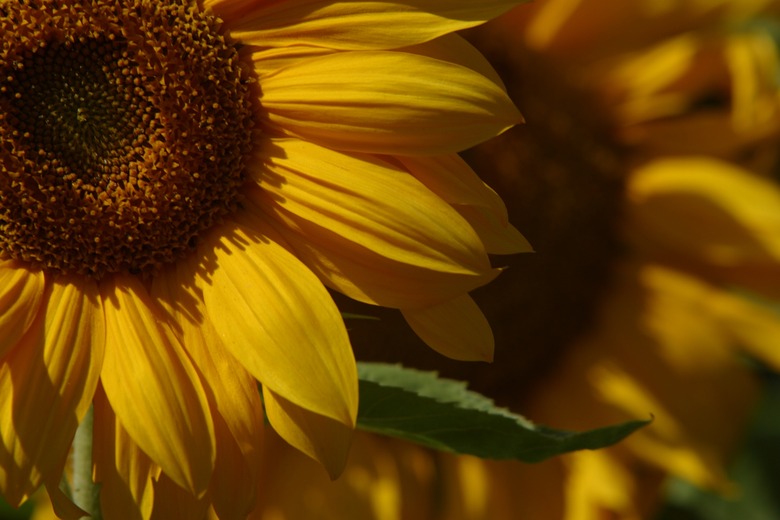Caterpillars On Sunflowers
Sunflowers (Helianthus spp.) create a cheery, pleasant atmosphere with their large, vibrant blooms that attract both beneficial and undesirable insects. Caterpillars are one such insect that brings positive and negative attributes to this genus of annual and perennial flowers. Butterflies and moths are the adult stage of caterpillars and act as pollinators for your garden. Their larvae, however, feed on the foliage and tender portions of sunflowers. Thankfully, caterpillars are typically not a serious concern and cause little to no serious damage.
Caterpillars on Sunflowers
Step 1
Various species of butterflies and moths use sunflowers as a host or food plant where they lay their eggs on the underside of leaves and consume the plant's nectar. The eggs give way to caterpillars, the larval stage of moths and butterflies. These caterpillars are generally consume the leaves — as well as other tender parts — of plants. Their feeding creates ragged holes or edges in the foliage and — under extreme infestations — can defoliate entire plants. It can also lead to loss of vigor and stunted growth. The sunflower moth (Homoeosoma electellum) is one such insect that lays its eggs on sunflower plants. After the eggs hatch, the young larvae — or caterpillars — feed on the floral parts of the sunflower while older larvae destroy seeds and other tissue on the plant's head.
- Sunflowers (Helianthus spp.)
- After the eggs hatch, the young larvae — or caterpillars — feed on the floral parts of the sunflower while older larvae destroy seeds and other tissue on the plant's head.
Manual Control
Step 1
Simply picking the caterpillars off sunflowers is an easy and effective method to control these annoying worms. However, it will take dedication, since newly hatched caterpillars may continue to appear even after you have removed the larger worms. Repeating the process two or three times a week helps you to stay on top of the caterpillar infestation. If you don't want to squash the caterpillars, merely dispose of them in a bucket filled with warm, soapy water. Even though leaf-eating caterpillars are typically not harmful, some species have stinging hairs and may cause skin irritation if handled without protection. Wearing work gloves will protect your hands from possible stings or irritation without restricting movement.
Cultural and Biological Control
Step 1
Nearby weeds often act as a host and hiding place for caterpillars, which migrate from the undesirable plants to your sunflowers. Removing these weeds will reduce the number of damaging pests that feed on the sunflowers. Another option for control is to attract predators that prey on caterpillars. Birds, spiders and lizards are three such predators that feed on the larval stages of moths and butterflies. A simple way to attract birds is to place bird feeders near the sunflowers. Keep in mind, however, that birds themselves will feed on sunflower seeds and may cause more problems than the caterpillars.
- Simply picking the caterpillars off sunflowers is an easy and effective method to control these annoying worms.
- Nearby weeds often act as a host and hiding place for caterpillars, which migrate from the undesirable plants to your sunflowers.
Chemical Control
Step 1
Only after other management options are exhausted or the life of the sunflowers are threatened should you turn to chemicals to control caterpillars. When opting for insecticides, choose the least toxic option available to reduce the amount of chemicals to which you expose your family. Bacillus thuringiensis var. israelensis (Bt), for example, contains a naturally borne bacterium that acts as a stomach poison. It is safe for use around people, pets, mammals and beneficial insects, targeting only the larval stage of moths, butterflies and certain beetles. Bacillus thuringiensis var. israelensis is applied as a foliar spray to control caterpillars and is available in ready-to-use and concentrate formulas.
- Only after other management options are exhausted or the life of the sunflowers are threatened should you turn to chemicals to control caterpillars.
References
- Missouri Botanical Garden: Helianthus Annuus
- University of California Statewide Integrated Pest Management: Foliage-Feeding Caterpillars
- Texas A&M University AgriLife Extension Service: Sunflowers
- Washington Department of Fish and Wildlife: Butterflies and How to Attract Them
- Fine Gardening: Genus Helianthus (Sunflower)
